Modern Art DessertsRecipes for Cakes, Cookies, Confections, and Frozen Treats Based on Iconic Works of Art
Taking cues from works by Andy Warhol, Frida Kahlo, and Matisse, pastry chef Caitlin Freeman, of Miette bakery and Blue Bottle Coffee fame, creates a collection of uniquely delicious dessert recipes (with step-by-step assembly guides) that give readers all they need to make their own edible masterpieces.
MODERN ART DESSERTS from Clay McLachlan on Vimeo.
From a fudge pop based on an Ellsworth Kelly sculpture to a pristinely segmented cake fashioned after Mondrian’s well-known composition, this collection of uniquely delicious recipes for cookies, parfait, gelées, ice pops, ice cream, cakes, and inventive drinks has everything you need to astound friends, family, and guests with your own edible masterpieces.
Taking cues from modern art’s most revered artists, these twenty-seven showstopping desserts exhibit the charm and sophistication of works by Andy Warhol, Cindy Sherman, Henri Matisse, Jeff Koons, Roy Lichtenstein, Richard Avedon, Wayne Thiebaud, and more. Featuring an image of the original artwork alongside a museum curator’s perspective on the original piece and detailed, easy-to-follow directions (with step-by-step assembly guides adapted for home bakers), Modern Art Desserts will inspire a kitchen gallery of stunning treats.
A self-taught baker and longtime owner of the San Francisco cake and sweets shop, Miette, Caitlin Freeman was inspired to bake by the confectionary paintings of California painter Wayne Thiebaud. After selling Miette in 2008, she started the pastry program at Blue Bottle Coffee Co. and coauthored The Blue Bottle Craft of Coffee. Her artistic creations for the Blue Bottle Café at the San Francisco Museum of Modern Art have been featured in the New York Times, Design Sponge, Elle Decor, San Francisco Chronicle, Huffington Post, and more. She lives in San Francisco, California.
Photo:Clay McLachlan © 2013
“Cookbook meets exhibit catalog in this art-themed collection.”
—Library Journal
“Let them eat cake…and art! Thanks to Caitlin Freeman, an author neé pastry chef with a unique and fresh talent, we can do just that. Freeman has written a visually rich book of charming dessert recipes from which you can re-create edible versions of your favorite works of modern art.”
—Trendland
“This book gets my ganache flowing—if only art history always tasted this good.”
—Todd Selby, photographer and author of Edible Selby
“Brilliant, quirky, and irresistible. Having tasted many of these dishes over the years, I’m not sure what’s more exciting, the recipes or the stories behind them. All dessert books should be this much fun!”
—Daniel Patterson, chef-owner of COI restaurant
“Only Caitlin Freeman is brave enough (and crazy enough) to dream up desserts inspired by works of modern art—and inventive enough to pull it off. Who looks at a Cindy Sherman self-portrait and sees an ice-cream float made with bubblegum soda, or at a Richard Avedon photograph of a beekeeper and pictures a glossy honey-pistachio parfait? This is more than a cookbook, it’s a journal of the creative process.”
—Oliver Strand, food journalist and coffee columnist for the New York Times
“The desserts Caitlin Freeman has created for the SFMOMA Blue Bottle Café are masterpieces in their own right. It’s one thing to make the most perfect white cake, frosting, and ganache; it’s another to use those media to create art, as she has with her Mondrian Cake. That is Caitlin’s special gift, and one that she has generously shared in this beautiful book. It, too, is a masterpiece.”
—Charlotte Druckman, food journalist and author of Skirt Steak:Women Chefs on Standing the Heat and Staying in the Kitchen
“This book touches the body’s most sensitive organ—the stomach. Most artists dream of creating works so provocative that they stimulate the brain while enervating all the other senses. Caitlin Freeman, probably the most innovative baker this side of Mars, does this spectacularly. Here’s a cookbook that demands you genuflect before its sheer creativity. It says ‘on your knees’ in a sugared tone.”
—Bompas & Parr, authors of Feasts with Bompas & Parr and founders of the Bompas & Parr studio
Kahlo Wedding Cookies
Fuller Hot Chocolate with Marshmallow and Sea Salt
Kahlo Wedding Cookies
Makes about 80 cookies
Hands-on time: 45 minutes
From start to finish: 6 hours
Note: If nocino is not available, vanilla extract can take its place. The key to creating a nice, spherical cookie is to thoroughly chill the dough before baking. The bottoms will flatten slightly, but the cookies will stay round otherwise.
Do Ahead: Stored in an airtight container, the toasted walnuts can be frozen for up to 2 months. The cookie dough must be chilled before and after shaping; at either stage, it can be refrigerated, covered tightly with plastic wrap, for up to 5 days.
Stored in an airtight container, the baked, unsugared cookies will keep for up to 4 days at room temperature.
Above and Beyond: The Kahlo Wedding Cookies are absolutely delicious on their own, but if you want to capture the details of the Frieda and Diego Rivera painting as we do at the museum, it’s all about the packaging. See Resources on page 205 for ordering the materials to create your own box, craft paper sticker, and custom ribbon, and download templates to make your own bird and sticker stamps from www.bluebottlecoffee.com/MAD.
1 cup (4 oz / 114 g) walnuts
1/2 cup (2 oz / 57 g) confectioners’ sugar, plus more for rolling
1 cup (8 oz / 227 g) unsalted butter, at room temperature
1 teaspoon Maldon sea salt (see page 31)
1 tablespoon nocino (see Note, above)
13/4 cups (8.6 oz / 245 g) all-purpose flour
In a medium, heavy-bottomed skillet, toast the walnuts over medium heat, shaking often, until fragrant and lightly browned, about 5 minutes. Transfer the walnuts to a bowl or plate and freeze until thoroughly chilled, at least 1 hour or for up to 2 months.
Place the frozen walnuts (they’re more easily processed when they’re cold) and 1/4 cup (1 oz / 28 g) of the confectioners’ sugar in a food processor and pulse until the mixture resembles coarse sand.
Combine the flour and walnut mixture in a medium bowl and set aside. In the bowl of a stand mixer fitted with the paddle attachment, beat the butter on low speed until smooth, 1 to 2 minutes. Sift in the remaining 1/4 cup (1 oz / 28 g) of confectioners’ sugar, add the salt, and mix on low speed until combined. Scrape down the bowl with a rubber spatula, and then beat on medium speed until the mixture is light and fluffy, 4 to 5 minutes. Add the nocino and beat until incorporated, about 20 seconds. Scrape down the bowl, then add the flour mixture and mix on low speed just until the dough is uniform, about 15 seconds. Cover the bowl tightly with plastic wrap and refrigerate for at least 3 hours or up to 5 days.
Portion the chilled dough into teaspoon-sized (0.25 oz / 7 g) pieces, and then roll each piece into a ball between your hands. Set the balls on a large plate, cover with plastic wrap, and refrigerate for at least 30 minutes, or up to 1 week.
Position racks in the upper and lower thirds of the oven. Preheat the oven to 350°F. Line 2 baking sheets with parchment paper.
Place the chilled balls on the prepared baking sheets, spacing them about 1 inch apart. Bake, rotating the baking sheets midway through baking, until the cookies are fragrant and lightly golden around the edges, 10 to 12 minutes.
Let the cookies cool for a few minutes on the baking sheets, and then use a spatula to transfer them to a wire rack to finish cooling. Once the baking sheets are no longer warm, bake the remaining dough balls and let the cookies cool completely.
Just before serving, sift about 1/2 cup (2 oz / 57 g) of confectioners’ sugar into a medium bowl. Roll the cooled cookies in the sugar until coated on all sides.
Fuller Hot Chocolate with Marshmallow and Sea Salt
Makes 8 drinks
Hands-on time: 30 minutes
From start to finish: 3 to 4 hours
Note: Once the marshmallows have set, they are still quite sticky. The best way to conquer the stickiness is to be generous with the cornstarch and confectioners’ sugar mixture, dusting your hands, tools, and all marshmallow surfaces.
This recipe requires an accurate thermometer for taking the temperature of the sugar syrup. Instant-read thermometers are notoriously inaccurate (which is why I love my thermocouple; see page 25), so if you own an instant-read thermometer, it’s good practice to check its calibration before beginning. Simply bring a small pot of water to a boil and verify that the thermometer registers 212°F (at sea level) when inserted into the water.
Do Ahead: This recipe makes enough chocolate ganache for 8 servings of hot chocolate. The ganache can be stored in an airtight container in the refrigerator for up to 1 week, and can be made ahead, or saved for another round of hot chocolate another day. See Working with Chocolate Ganache, page 91, for reheating instructions. The marshmallows take 3 to 4 hours to set, but can be made up to a month in advance and, in fact, the curing time gives them an even better texture. Stored in an airtight container, the marshmallows will keep for 1 month at room temperature.
Note that this recipe makes more marshmallows than you need for the hot chocolate. Since the marshmallows are best made in this batch size and have a 1-month shelf life, consider using the leftovers for mini s’mores (page 111) or as a less boozy take on the Koons Hot Chocolate (page 185).
Above and Beyond: When making marshmallows for this hot chocolate, I call for Maldon sea salt in case gathering seawater and then boiling it until it evaporates isn’t on your list of things to do. But if you’re up for the challenge, making sea salt is really easy (see Making Your Own Sea Salt, page 195). Just be sure to collect water that’s clean and pristine. To make the tetrahedral marshmallows, generously sift the cornstarch mixture into a flexible 23/4 by 11/2-inch flexible pyramid mold (see Resources, page 205). To fill the mold, fit a piping bag with a 1/2-inch plain tip, fill the bag with marshmallow mixture, and pipe marshmallow into each indentation. Sprinkle a pinch of sea salt over the bottom of each marshmallow and let stand at room temperature for 2 to 3 hours until set.
Marshmallows
5 gelatin sheets, or 33/4 teaspoons powdered gelatin
1/3 cup (2.9 oz / 80 g) water, if using powdered gelatin, plus 3 tablespoons
1/4 cup (1.1 oz / 31 g) cornstarch
1/4 cup (1 oz / 28 g) confectioners’ sugar
11/2 teaspoons vanilla extract
3/4 cup (5.3 oz / 150 g) granulated sugar
1/4 cup plus 2 tablespoons (2.9 oz / 82 g) light agave syrup
Pinch of kosher salt
Maldon sea salt, for garnish (see page 31)
Chocolate Ganache
8 ounces (224 g) high-quality bittersweet chocolate (62% to 70% cacao), finely chopped
1 cup (8.3 oz / 232 g) heavy cream
8 cups (69.1 oz / 1936 g) whole milk, steamed or warmed
To make the marshmallows, if you’re using gelatin sheets, fill a medium bowl with ice water and submerge the sheets in the water. If you’re using powdered gelatin, pour the 1/3 cup (2.9 oz / 80 g) of water into a small bowl and sprinkle the gelatin evenly over the surface. Let either stand for 5 to 10 minutes. Meanwhile, sift the cornstarch and confectioners’ sugar into a small bowl.
Line an 8 by 8-inch baking pan with 2 sheets of parchment or waxed paper, laying the sheets perpendicular to each other so that the bottom and all sides of the pan are covered. Sift enough cornstarch mixture into the prepared pan to completely and generously cover the bottom. Reserve the remaining cornstarch mixture.
In a small saucepan over medium-high heat, stir together the remaining 3 tablespoons of water, granulated sugar, agave, and kosher salt. Bring the mixture to a boil without stirring and cook until the temperature registers 238°F to 240°F on a digital thermometer.
Meanwhile, if using gelatin sheets, lift the softened sheets out of the bowl, squeeze out the excess water, and put the gelatin in the bowl of a stand mixer fitted with the whisk attachment. If using powdered gelatin, put the bloomed gelatin directly into the mixer bowl. Add the vanilla extract to the mixer bowl.
With the mixer turned off, pour all of the hot sugar syrup over the gelatin. Whip on low speed for 30 seconds, increase to medium speed and beat for 30 seconds, and then increase the speed to high and whip for 10 to 11 minutes until the mixture is smooth, glossy, and holds medium-firm peaks. It won’t begin to resemble marshmallow until around the 5-minute mark.
Working quickly, transfer the mixture to the prepared pan and smooth the surface with a greased offset spatula. Lightly sprinkle the top with Maldon sea salt and let stand at room temperature for 3 to 4 hours until set.
Sift a generous amount of the reserved cornstarch mixture over the surface of the marshmallow. Remove from the pan by running a knife along any stuck edges, and then carefully peel away the parchment paper. Cover all edges with cornstarch mixture. Using a clean, hot knife or clean, hot scissors, cut the marshmallow into 11/2-inch squares.Generously dust all cut edges with cornstarch mixture to prevent sticking.
Meanwhile, to make the chocolate ganache, put the chocolate in a medium heatproof bowl.
In a small, heavy-bottomed saucepan over medium-low heat, warm the cream, stirring occasionally, until it registers 180°F to 190°F on a digital thermometer and bubbles start to form around the edges. (Alternatively, put the cream into a microwavable liquid measuring cup or bowl and microwave at full power for about 60 seconds.)
Pour the hot cream over the chocolate and, using rubber spatula, stir until the chocolate is mostly melted. Blend with an immersion blender or transfer to a food processor and process until the chocolate is completely melted and the mixture is smooth and shiny. (Alternatively, set the bowl over a saucepan of just simmered water and whisk until the chocolate is melted and the mixture is smooth.)
To make the hot chocolate, rewarm the ganache to pourable consistency (see Working with Chocolate Ganache, page 91), if needed, and place 1/4 cup (2.3 oz / 64 g) of ganache into each 10-ounce ceramic cup. Pour 1 cup (8.6 oz / 242 g) of the steamed milk into each cup. If you pour holding the vessel containing the milk 12 inches above the cup, gravity will provide all the agitation that’s required to blend the ganache with the milk. No stirring needed.
Top with two marshmallows and serve.
Reprinted with permission from Modern Art Desserts: Recipes for Cakes, Cookies, Confections, and Frozen Treats Based on Iconic Works of Art, by Caitlin Freeman, copyright © 2013. Published by Ten Speed Press, a division of Random House, Inc.
Photo:Clay McLachlan © 2013


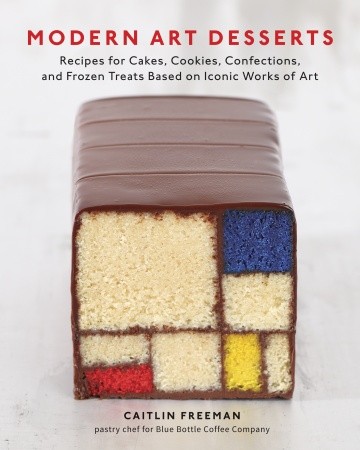





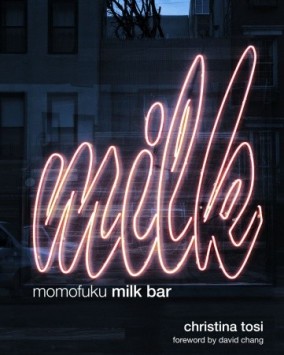
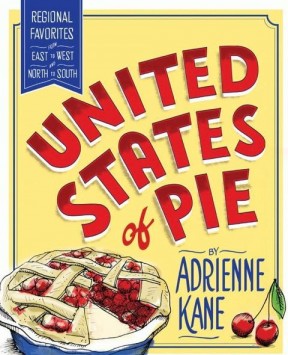
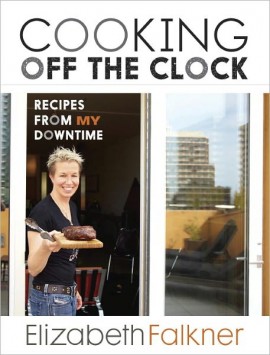
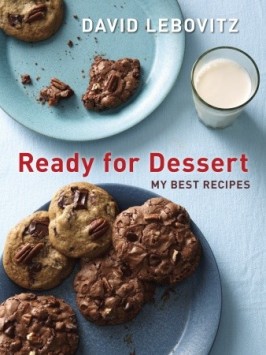
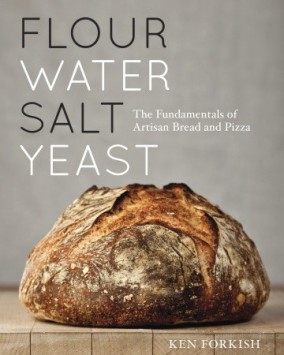
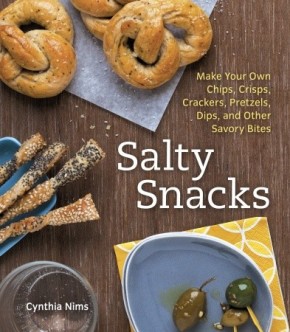
Leave a Reply